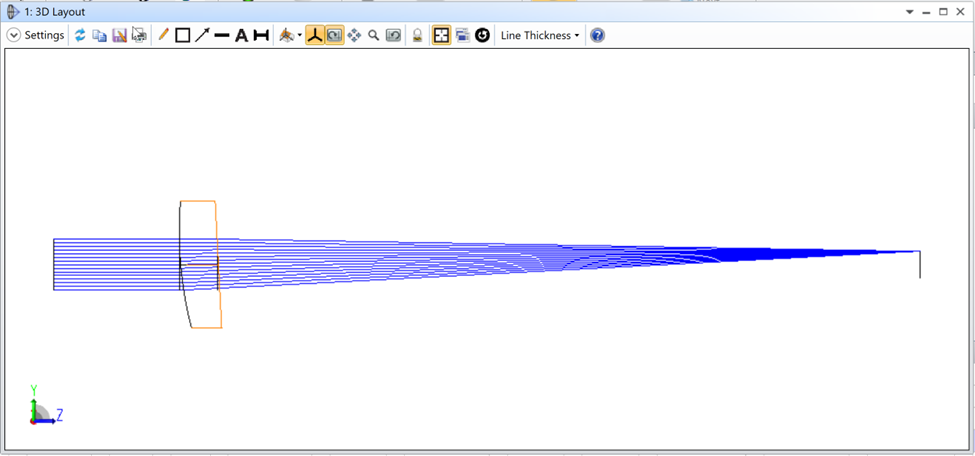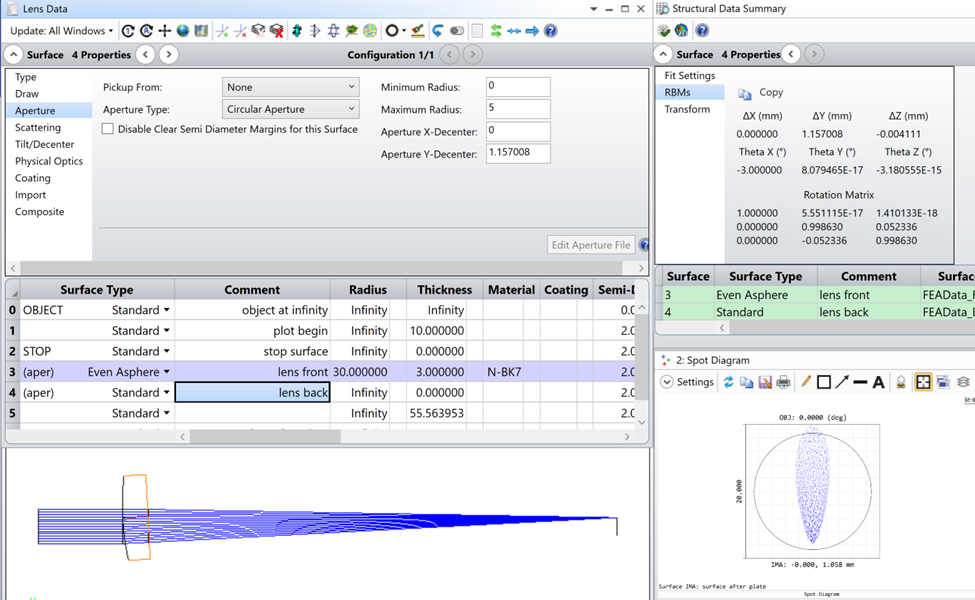When FEA data containing Rigid-body motions is applied to a surface, the local vertex of the surface doesn’t change. In the Singlet example, the deformation data tilts the lens by 3° and decenters in Y by 1 mm. The vertex coordinates of the surface do not change.
Since the apertures are always defined in local surface coordinates, the singlet surfaces move, but the apertures do not, as can be seen in the layout plot below.

To correct for this and improve the layout plot, we can observe the decenters reported in STAR/Structural Data Summary/Properties/RBMs. If the X and Y decenter values are applied to the aperture, the final layout plot is more correct. (We can’t adjust the tilt, because apertures in Zemax are always applied in the local XY plane.)
Take care with this correction, though.! If the FEA data is not larger than the clear aperture, the new aperture may cover parts of the lens that lack deformation data. This works best when the FEA deformations overfill the clear aperture of the part.
Note that the aperture decenters will need to be removed if the RBMs are converted to Coordinate Breaks, as we will show in later parts of this article.




